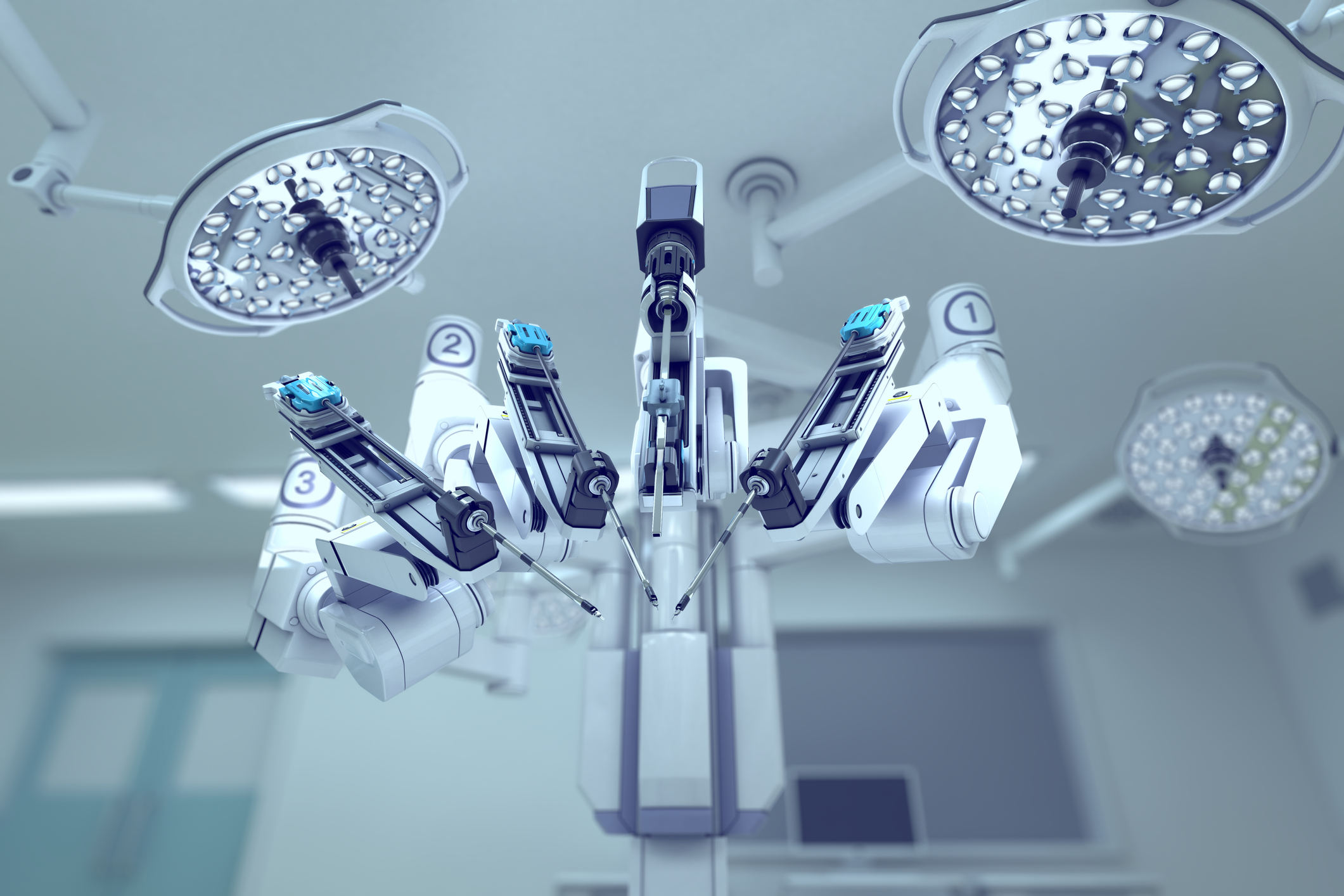
Robotic prostatectomy is one of the cutting-edge surgical techniques for treating prostate cancer. In this minimally invasive treatment, advanced robotic systems allow greater precision, smaller incisions, and quicker recovery than traditional open surgeries. Here, we are going to provide you with everything you need to know about the robotic prostatectomy surgery procedure & recovery time. Dr. Mourad Abouelleil is a highly skilled and experienced urologist specializing in robot-assisted surgeries with greater precision and optimal results.
Robotic prostatectomy, also called robotic-assisted radical prostatectomy, is a type of minimally invasive surgery that enables surgeons to remove the prostate gland in men diagnosed with prostate cancer. Robotic operative prostatectomy is different from open surgery because, instead of making one large cut in the abdomen, it uses small cuts in tandem with robotic arms that the surgeon controls
The da Vinci Surgical System is this procedure’s most commonly used robotic platform. It can produce 3D visualization, enhanced dexterity, and tremor-free movements, allowing surgeons like Dr. Mourad Abouelleil to perform complex procedures, often better than with a hand-held instrument.
Robotic-assisted surgery has many benefits compared to traditional open or laparoscopic surgery. Some of the more notable benefits are
Greater precision in surgery: Robotic arms have a full range of motion and can perform delicate movements, which can be difficult in traditional open surgery.
Minimally invasive surgery: The smaller incisions will cause less trauma to the surrounding tissues, less bleeding, and fewer complications.
Improved recovery: Patients will generally spend less time in the hospital and return to normal activities faster.
Preserve function: Improved visualization and control will allow surgeons to preserve the nerves for urinary and sexual functions.
Less post-operative pain: reduction in pain medication needed and faster healing.
Not every patient with prostate cancer is eligible for robotic prostatectomy surgery. Some of the general indications for robotic prostatectomy
Individual aspects such as the Gleason score, PSA levels, the size of the tumor, and the patient’s age are reviewed to determine eligibility.
Before robotic prostatectomy surgery, patients undergo a complete evaluation that includes blood tests, imaging, and physical exams. Instructions are provided regarding medications, fasting, and hydration.
The robotic prostatectomy surgery typically takes somewhere around 2 to 4 hours, depending on the complexity. After surgery, most patients remain in the hospital for at least 1 to 2 days for postoperative medical care
As compared to traditional open surgery, recovery after robotic prostatectomy is generally smoother and faster. Here is the recovery timeline after surgery:
Hospital Stay: Most patients are discharged within 24 to 48 hours after surgery.
Catheter Use: A urinary catheter remains in place for 5 to 10 days to allow healing.
Pain Management: After robotic prostatectomy, mild to moderate pain is expected, but it can be managed with proper medication and postoperative care.
Activity Resumption: Light activities such as walking can be resumed within a few days. Within 2 to 4 weeks, patients usually return to normal activities.
Long-Term Recovery: It may take several months for complete recovery, including restoration of urinary and sexual function. Regular follow-up is crucial to monitor PSA levels and the healing process
Like all types of surgery, robotic prostatectomy carries risks; however, the risks of robotic prostatectomy are significantly less due to its minimally invasive approach. Possible complications include
Preparing for surgery plays a key role in the success of any treatment procedure. Patients are instructed to:
With extensive experience and expertise, Dr. Mourad Abouelleil is renowned for performing robotic prostatectomy for treating prostate cancer. He has successfully performed numerous prostate cancer surgeries with optimal results and better recovery. There are multiple reasons to choose Dr. Abouelleil for robotic prostatectomy surgery, including.
If you want to learn more about the robotic prostatectomy surgery procedure, book a consultation with Dr.Abouelleil by contacting his team through the given details:
Mourad Abouelleil, MD
Phone No: (561) 291-7182
Address: Palm Beach Health Network Physician Group 1411 North Flagler Drive Suite #3800 West Palm Beach, FL 33401
Answer. Some of the common side effects that may occur after surgery include urinary incontinence and erectile dysfunction, which can be managed with proper postoperative medical care.
Answer. This treatment typically takes 2 to 4 hours, depending on factors such as the surgeon’s expertise and the case’s complexity
Answer. Robotic surgery involves small incisions, which result in minimal scarring that fades significantly over time
Answer. Robotic prostatectomy is a highly effective and safe treatment procedure, but there is still a small chance of recurrence. Proper monitoring with PSA tests helps to detect any early signs for further treatment if necessary.

Dr. Mourad Abouelleil is a highly skilled and certified urologist known for his dedication to excellence in advanced urological procedures, such as robotic prostatectomy, HIFU, etc. With cutting-edge technology and extensive experience, Dr. Mourad Abouelleil provides personalized treatment plans to meet the unique needs of every patient with quality medical care.
Error: Contact form not found.